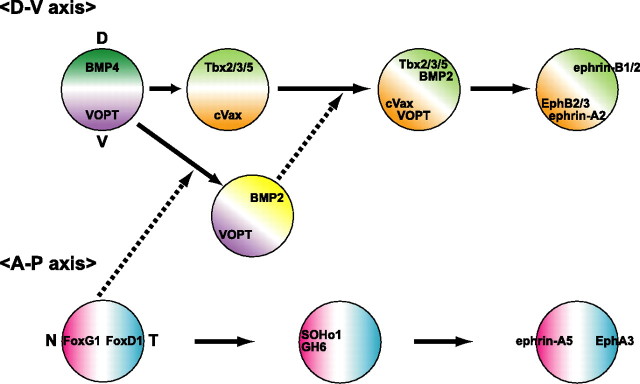Figure 10.
Developmental expression of topographic molecules in the chick retina. Counteraction between FoxG1 and FoxD1 determines the regional specificity along the A-P axis in the retina. FoxG1 controls ephrin-A5 by a DNA binding-dependent mechanism, ephrin-A2 by a DNA binding-independent mechanism, and FoxD1, SOHo1, GH6, and EphA3 by dual mechanisms. Counteraction between Ventroptin (VOPT) and BMP4 governs the regional specification in the retina along the D-V axis at early stages (HH stage 11 to E5). At approximately E5, BMP4 expression in the dorsal retina rapidly begins to disappear, and Ventroptin comes to be expressed in a oblique-gradient manner from E6 onward (in a V/N-high gradient). Concomitantly, BMP2 begins to be expressed in a pattern complementary to that of Ventroptin (in a D/T-high gradient). The inhibitory action of FoxG1 on BMP signaling is attributable to the turning of the expression of Ventroptin and BMP2 into the oblique-gradient pattern. The counteraction between Ventroptin and BMP2 determines the expression of the formerly dorsoventrally asymmetric molecules in a oblique-gradient manner and resultantly governs the retinal patterning and retinotectal projection along both the A-P and D-V axes. For more details, see Discussion. The developing stage proceeds from the left to the right.

